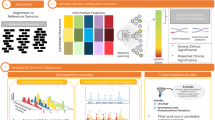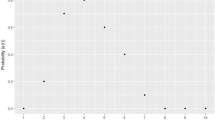Abstract
In recent years, an increasing number of projects have investigated tumor genome structure, using microarray-based techniques like array comparative genomic hybridization (array-CGH) or single nucleotide polymorphism (SNP) arrays. The forthcoming studies have to integrate these former results and compare their findings to the existing sets of copy number data for validation. These sets also form the basis from which many comparative retrospective analyses can be carried out. Nevertheless, exploitation of this mass of data relies on a homogeneous preparation of copy number data, which will make it possible to compare them together, and their integration into a unified bioinformatics environment with ad hoc analysis tools and interfaces. To our knowledge, no such data integration has been proposed yet. Therefore the biologists and clinicians involved in cancer research urgently need such an integrative tool, which motivated us to undertake the construction of a database for array-CGH and other DNA copy number data for tumors (ACTuDB). When available, the associated clinical, transcriptome and loss of heterozygosity data were also integrated into ACTuDB. ACTuDB contains currently about 1500 genomic profiles for tumors and cell lines for the bladder, brain, breast, colon, liver, lymphoma, neuroblastoma, mouth and pancreas, together with data for replication timing experiments. The CGH array data were processed, using ad hoc algorithms (probe mapping, breakpoint detection, gain or loss status assignment and visualization) developed at Institut Curie. The database is available from http://bioinfo.curie.fr/actudb/ and can be browsed with a user-friendly interface. This database will be a useful resource for the genomic profiling of tumors, a field of highly active research. We invite research groups involved in tumor genome profiling to submit their data to ACTuDB.
This is a preview of subscription content, access via your institution
Access options
Subscribe to this journal
Receive 50 print issues and online access
$259.00 per year
only $5.18 per issue
Buy this article
- Purchase on Springer Link
- Instant access to full article PDF
Prices may be subject to local taxes which are calculated during checkout








Similar content being viewed by others
References
Albertson DG, Collins C, McCormick F, Gray JW . (2003). Chromosome aberrations in solid tumors. Nat Genet 34: 369–376.
Baudis M . (2006). Online database and bioinformatics toolbox to support data mining in cancer cytogenetics. BioTechniques 40: 269–271.
Blaveri E, Brewer JL, Roydasgupta R, Fridlyand J, DeVries S, Koppie T et al. (2005). Bladder cancer stage and outcome by array-based comparative genomic hybridization. Clin Cancer Res 11: 7012–7022.
Bredel M, Bredel C, Juric D, Harsh GR, Vogel H, Recht LD et al. (2005). High-resolution genome-wide mapping of genetic alterations in human glial brain tumors. Cancer Res 65: 4088–4096.
Calin GA, Croce CM . (2006). MicroRNA-cancer connection: the beginning of a new tale. Cancer Res 66: 7390–7394.
Chen X, Cheung ST, So S, Fan ST, Barry C, Higgins J et al. (2002). Gene expression patterns in human liver cancers. Mol Biol Cell 13: 1929–1939.
de Leeuw RJ, Davies JJ, Rosenwald A, Bebb G, Gascoyne RD, Dyer MJS et al. (2004). Comprehensive whole genome array CGH profiling of mantle cell lymphoma model genomes. Hum Mol Genet 13: 1827–1837.
Douglas EJ, Fiegler H, Rowan A, Halford S, Bicknell DC, Bodmer W et al. (2004). Array comparative genomic hybridization analysis of colorectal cancer cell lines and primary carcinomas. Cancer Res 64: 4817–4825.
Fridlyand J, Snijders AM, Ylstra B, Li H, Olshen A, Segraves R et al. (2006). Breast tumor copy number aberration phenotypes and genomic instability. BMC Cancer 6: 96.
Griffiths-Jones S . (2006). miRBase: the microRNA sequence database. Methods Mol Biol 342: 129–138.
Gysin S, Rickert P, Kastury K, McMahon M . (2005). Analysis of genomic DNA alterations and mRNA expression patterns in a panel of human pancreatic cancer cell lines. Genes Chromosomes Cancer 44: 37–51.
Hupé P, Stransky N, Thiery JP, Radvanyi F, Barillot E . (2004). Analysis of array CGH data: from signal ratio to gain and loss of DNA regions. Bioinformatics 20: 3413–3422.
Hurst CD, Fiegler H, Carr P, Williams S, Carter NP, Knowles MA . (2004). High-resolution analysis of genomic copy number alterations in bladder cancer by microarray-based comparative genomic hybridization. Oncogene 23: 2250–2263.
Iafrate AJ, Feuk L, Rivera MN, Listewnik ML, Donahoe PK, Qi Y et al. (2004). Detection of large-scale variation in the human genome. Nat Genet 36: 949–951.
Janoueix-Lerosey I, Hupé P, Maciorowski Z, La Rosa P, Schleiermacher G et al. (2005). Preferential occurrence of chromosome breakpoints within early replicating regions in neuroblastoma. Cell Cycle 4: 1842–1846.
Karolchik D, Baertsch R, Diekhans M, Furey TS, Hinrichs A, Lu YT et al. (2003). The UCSC genome browser database. Nucleic Acids Res 31: 51–54.
Kent WJ . (2002). BLAT – The BLAST-like alignment tool. Genome Res 12: 656–664.
Kotliarov Y, Steed ME, Christopher N, Walling J, Su Q, Center A et al. (2006). High-resolution global genomic survey of 178 gliomas reveals novel regions of copy number alteration and allelic imbalances. Cancer Res 66: 9428–9436.
La Rosa P, Viara E, Hupé P, Pierron G, Liva S, Neuvial P et al. (2006). VAMP: Visualization and analysis of array-CGH, transcriptome and other molecular profiles. Bioinformatics 22: 2066–2073.
Lee RC, Feinbaum RL, Ambros V . (1993). The C. elegans heterochronic gene lin-4 encodes small RNAs with antisense complementarity to lin-14. Cell 75: 843–854.
Lu J, Getz G, Miska EA, Alvarez-Saavedra E, Lamb J, Peck D et al. (2005). MicroRNA expression profiles classify human cancers. Nature 435: 834–838.
Mosse YP, Greshock J, Margolin A, Naylor T, Cole K, Khazi D et al. (2005). High-resolution detection and mapping of genomic DNA alterations in neuroblastoma. Genes Chromosomes Cancer 43: 390–403.
Nakao K, Mehta KR, Fridlyand J, Moore DH, Jain AN, Lafuente A et al. (2004). High-resolution analysis of DNA copy number alterations in colorectal cancer by array-based comparative genomic hybridization. Carcinogenesis 25: 1345–1357.
Patil MA, Gutgemann I, Zhang J, Ho C, Cheung S-T, Ginzinger D et al. (2005). Array-based comparative genomic hybridization reveals recurrent chromosomal aberrations and Jab1 as a potential target for 8q gain in hepatocellular carcinoma. Carcinogenesis 26: 2050–2057.
Pinkel D, Albertson DG . (2005). Array comparative genomic hybridization and its applications in cancer. Nat Genet 37(Suppl): 11–17.
Pollack JR, Sorlie T, Perou CM, Rees CA, Jeffrey SS, Lonning PE et al. (2002). Microarray analysis reveals a major direct role of DNA copy number alteration in the transcriptional program of human breast tumors. Proc Natl Acad Sci USA 99: 12963–12968.
Rouveirol C, Stransky N, Hupé P, La Rosa P, Viara E, Barillot E et al. (2006). Computation of recurrent minimal genomic alterations from CGH data. Bioinformatics 22: 849–856.
Snijders AM, Nowak N, Segraves R, Blackwood S, Brown N, Conroy J et al. (2001). Assembly of microarrays for genome-wide measurement of DNA copy number. Nat Genet 29: 263–264.
Snijders AM, Schmidt BL, Fridlyand J, Dekker N, Pinkel D, Jordan RCK et al. (2005). Rare amplicons implicate frequent deregulation of cell fate specification pathways in oral squamous cell carcinoma. Oncogene 24: 4232–4242.
Stransky N, Vallot C, Reyal F, Bernard-Pierrot I, de Medina SGD, Segraves R et al. (2006). Regional copy number-independent deregulation of transcription in cancer. Nat Genet 38: 1386–1396.
Veltman JA, Fridlyand J, Pejavar S, Olshen AB, Korkola JE, DeVries S et al. (2003). Array-based comparative genomic hybridization for genome-wide screening of DNA copy number in bladder tumors. Cancer Res 63: 2872–2880.
Woodfine K, Fiegler H, Beare DM, Collins JE, McCann OT, Young BD et al. (2004). Replication timing of the human genome. Hum Mol Genet 13: 191–202.
Ylstra B, van den Ijssel P, Carvalho B, Brakenhoff RH, Meijer GA . (2006). BAC to the future! Or oligonucleotides: a perspective for micro array comparative genomic hybridization (array CGH). Nucleic Acids Res 34: 445–450.
Acknowledgements
We thank Olivier Delattre and Alain Aurias (Institut Curie, INSERM U509), who made information from the Institut Curie clone database available within ACTuDB. We thank our colleagues at Institut Curie for their help in setting up ACTuDB: Stéphane Tsacas, Jean-Gabriel Dick and Fraņcois-David Collin (Institut Curie) for system, network and database administration. This work was supported partly by the EC contract ESBIC-D (LSHG-CT-2005-518192).
Author information
Authors and Affiliations
Corresponding author
Additional information
Supplementary Information accompanies the paper on the Oncogene website (http://www.nature.com/onc).
Rights and permissions
About this article
Cite this article
Hupé, P., La Rosa, P., Liva, S. et al. ACTuDB, a new database for the integrated analysis of array-CGH and clinical data for tumors. Oncogene 26, 6641–6652 (2007). https://doi.org/10.1038/sj.onc.1210488
Received:
Revised:
Accepted:
Published:
Issue Date:
DOI: https://doi.org/10.1038/sj.onc.1210488
Keywords
This article is cited by
-
RASOnD - A comprehensive resource and search tool for RAS superfamily oncogenes from various species
BMC Genomics (2011)
-
CNV Workshop: an integrated platform for high-throughput copy number variation discovery and clinical diagnostics
BMC Bioinformatics (2010)
-
Genome-Wide Analysis of Cutaneous T-Cell Lymphomas Identifies Three Clinically Relevant Classes
Journal of Investigative Dermatology (2010)



